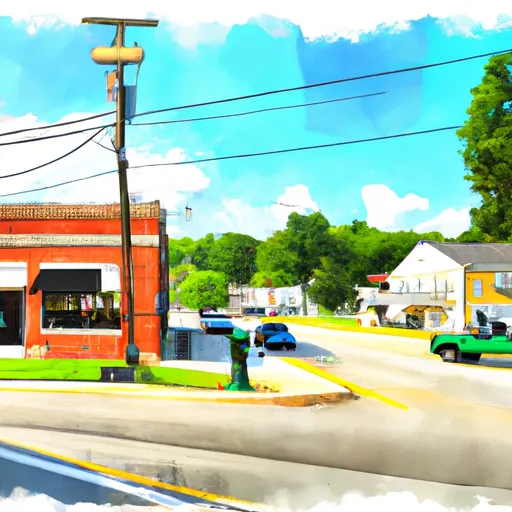-
 Snoflo Premium
Snoflo Premium
Get unlimited access to all our content
With no Ad interruptions! - Start Your Free Trial Login with existing account
Maloneton
Eden Index
Climate
8.3
•
Recreation
2.2
•
Community
0.9
•
Safeguard
4.3/10

Maloneton, Kentucky is a small town located in the northeastern part of the state. The climate in Maloneton is classified as humid subtropical, characterized by hot and humid summers and mild winters. Summers can be quite hot, with temperatures often reaching the mid-80s to low 90s Fahrenheit, while winters are generally mild, with temperatures ranging from the mid-30s to mid-40s Fahrenheit.
The town is surrounded by beautiful natural landscapes, including several rivers and lakes. The hydrology constituents in Maloneton are dominated by the Ohio River, which borders the town to the northeast. The river provides opportunities for various water activities such as boating, fishing, and kayaking.
In addition to the Ohio River, there are several smaller lakes and creeks in the area, offering additional outdoor recreation options. These water bodies are known for their diverse fish populations, making Maloneton a popular destination for anglers.
Outdoor enthusiasts can also explore the surrounding forests and trails for activities like hiking, camping, and wildlife observation. The picturesque landscapes and serene environment make Maloneton a great place for nature lovers to unwind and enjoy the outdoors. With its pleasant climate and abundant outdoor recreation opportunities, Maloneton offers a charming escape for those seeking a peaceful retreat.
What is the Eden Index?
The Snoflo Eden Index serves as a comprehensive rating system for regions, evaluating their desirability through a holistic assessment of climate health, outdoor recreation opportunities, and natural disaster risk, acknowledging the profound impact of these factors on livability and well-being.
Climate Health Indicator (CHI): 8.3
Maloneton receives approximately
1024mm of rain per year,
with humidity levels near 82%
and air temperatures averaging around
12°C.
Maloneton has a plant hardyness factor of
6, meaning
plants and agriculture in this region thrive during a short period during spring and early summer. Most
plants will die off during the colder winter months.
By considering the ideal temperature range, reliable water supplies, clean air, and stable seasonal rain or snowpacks, the Climate Health Indicator (CHI) underscores the significance of a healthy climate as the foundation for quality living.
A healthy climate is paramount for ensuring a high quality of life and livability in a region, fostering both physical well-being and environmental harmony. This can be characterized by ideal temperatures, reliable access to water supplies, clean air, and consistent seasonal rain or snowpacks.
Weather Forecast
Streamflow Conditions
Middle Ohio-Raccoon
Area Rivers
Middle Ohio-Raccoon
Snowpack Depths
Middle Ohio-Raccoon
Reservoir Storage Capacity
Middle Ohio-Raccoon
Groundwater Levels
Recreational Opportunity Index (ROI): 2.2
The Recreational Opportunity Index (ROI) recognizes the value of outdoor recreational options, such as parks, hiking trails, camping sites, and fishing spots, while acknowledging that climate plays a pivotal role in ensuring the comfort and consistency of these experiences.
Access to outdoor recreational opportunities, encompassing activities such as parks, hiking, camping, and fishing, is crucial for overall well-being, and the climate plays a pivotal role in enabling and enhancing these experiences, ensuring that individuals can engage in nature-based activities comfortably and consistently.
Camping Areas
| Campground | Campsites | Reservations | Toilets | Showers | Elevation |
|---|---|---|---|---|---|
| Carr Creek State Park | 40 | 1,093 ft | |||
| Littcarr - Carr Creek Lake | None | 1,050 ft | |||
| Portal 31 RV Park | 20 | 1,841 ft | |||
| Paintsville Lake State Park | 40 | 618 ft |
Nearby Ski Areas
Catastrophe Safeguard Index (CSI):
The Catastrophe Safeguard Index (CSI) recognizes that natural disaster risk, encompassing floods, fires, hurricanes, and tornadoes, can drastically affect safety and the overall appeal of an area.
The level of natural disaster risk in a region significantly affects safety and the overall livability, with climate change amplifying these risks by potentially increasing the frequency and intensity of events like floods, fires, hurricanes, and tornadoes, thereby posing substantial challenges to community resilience and well-being.
Community Resilience Indicator (CRI): 0.9
The Community Resilience Indicator (CRI) recognizes that education, healthcare, and socioeconomics are crucial to the well-being of a region. The CRI acknowledges the profound impact of these elements on residents' overall quality of life. By evaluating educational resources, healthcare accessibility, and economic inclusivity, the index captures the essential aspects that contribute to a thriving community, fostering resident satisfaction, equity, and social cohesion.

